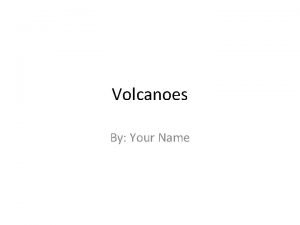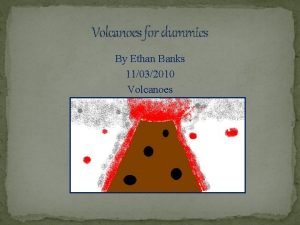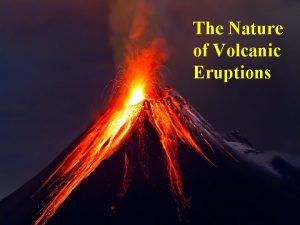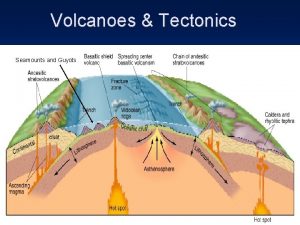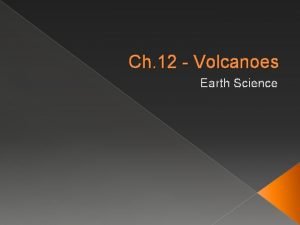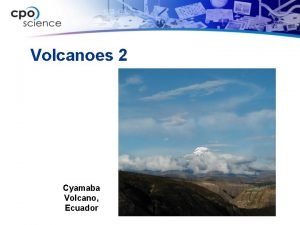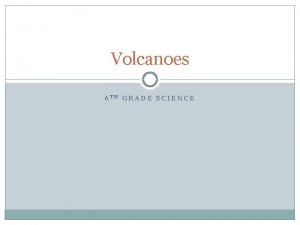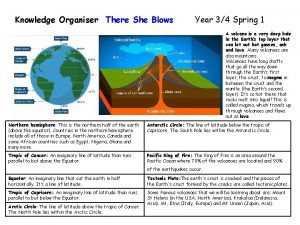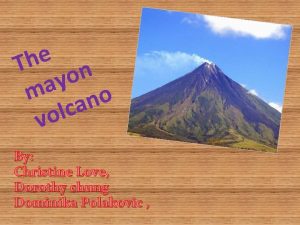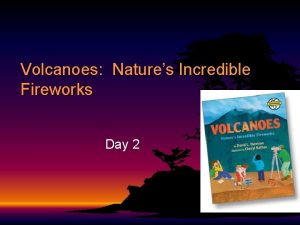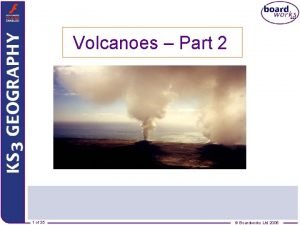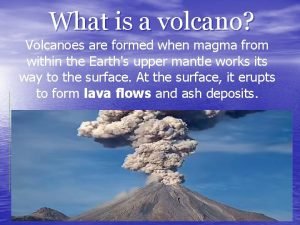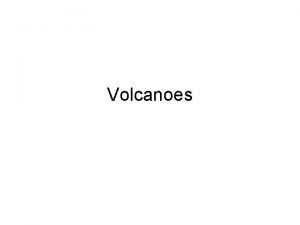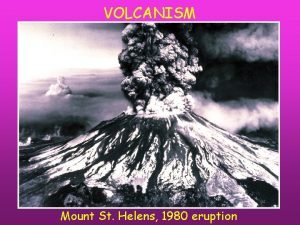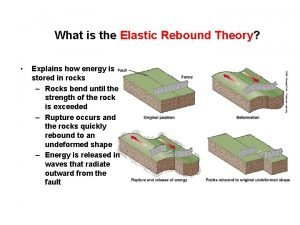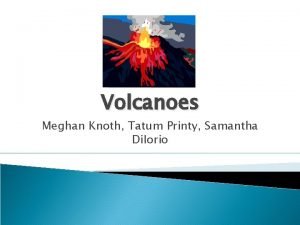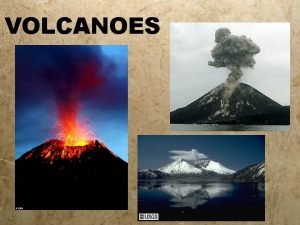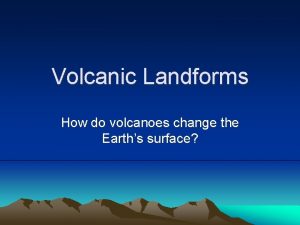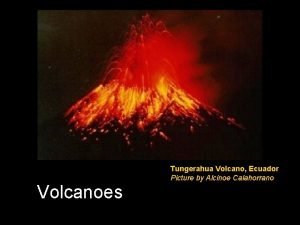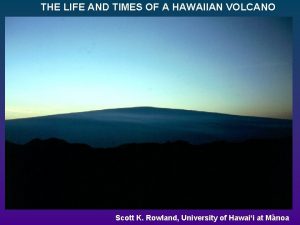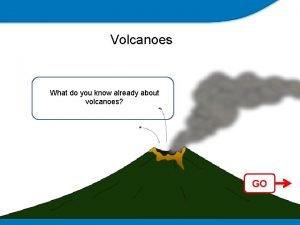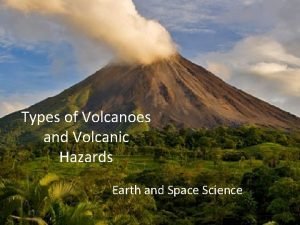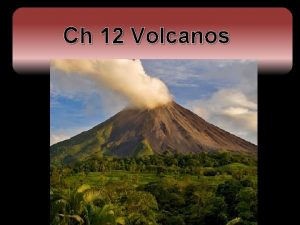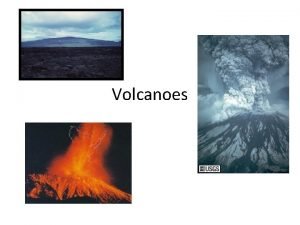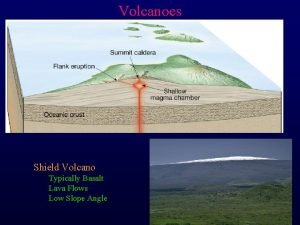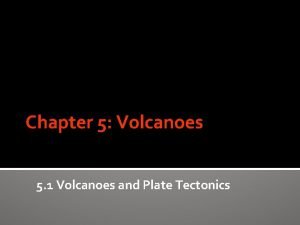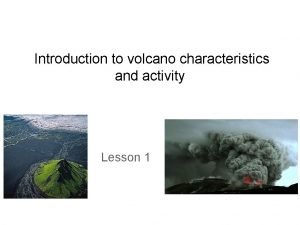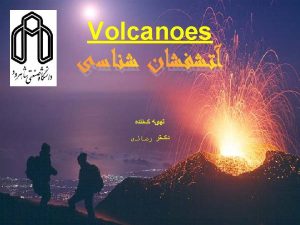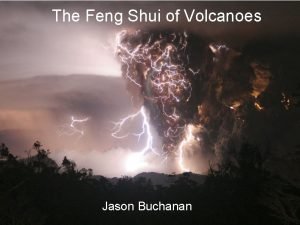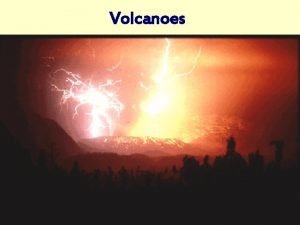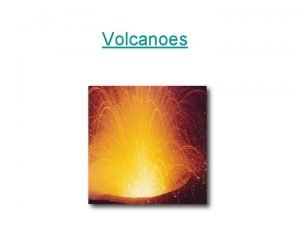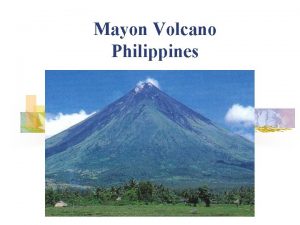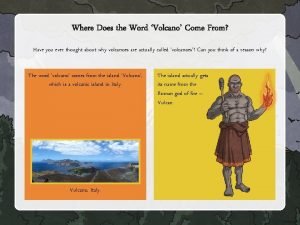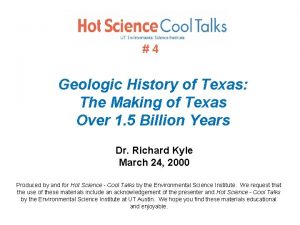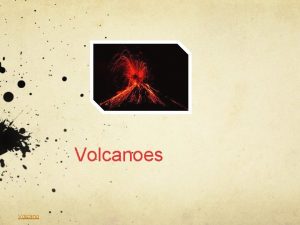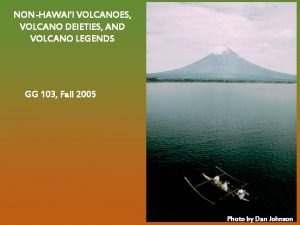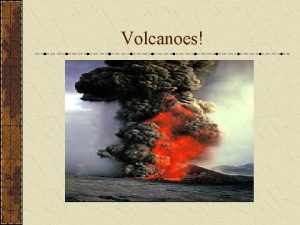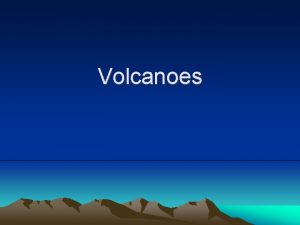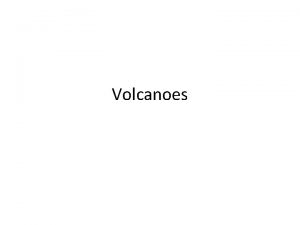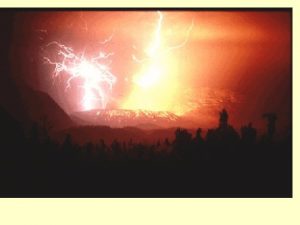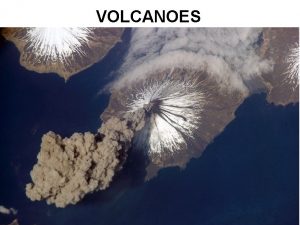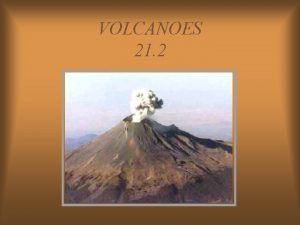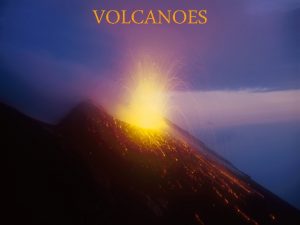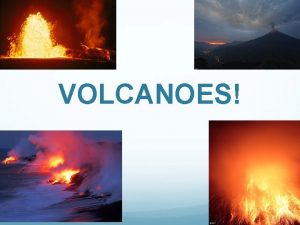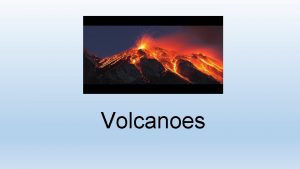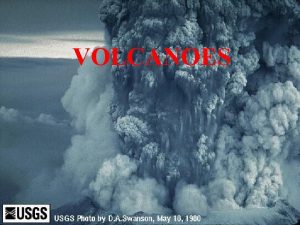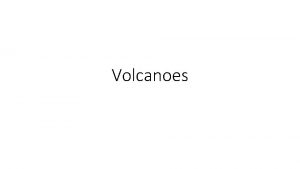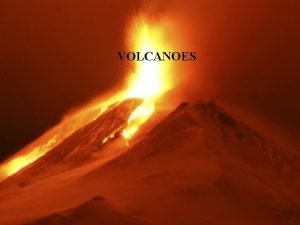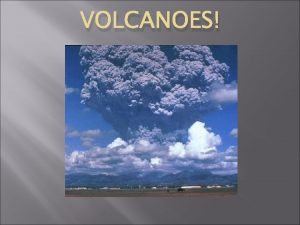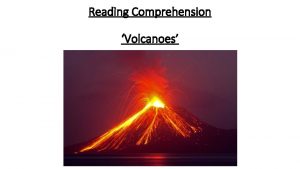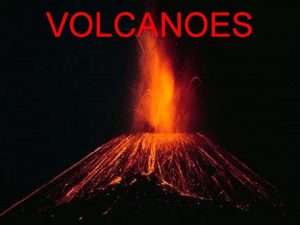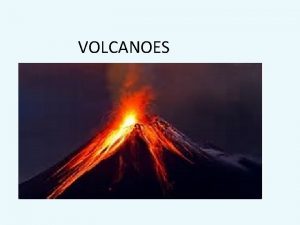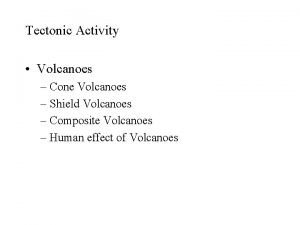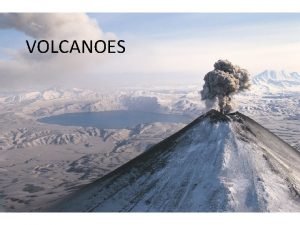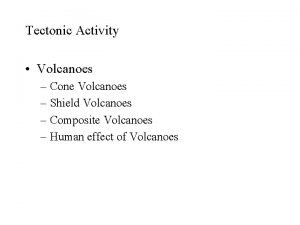Module 12 Volcanoes VOLCANOES q A volcano is












































- Slides: 44

Module 12 Volcanoes

VOLCANOES q A volcano is a vent or fissure in the Earth’s crust through which molten magma, hot gases, and other fluids escape to the surface of the land or to the bottom of the sea q Eruption: Ø The escape of magmatic products from the chamber through the vent to the surface. Ø Due to gas pressure of the magma, eruption can be classified: Ø Effusive Ø Explosive Ø Combination (Composite)

Based on the vent position, volcanic eruption can be classified into: • • Central Eruption Fissure Eruption Side Eruption Excentric Eruption

Vent positions Central Eruption Fissure Eruption Side Eruption

Parts of a volcano

Earth’s Geothermal q GEOTHERM: increase in temperature with depth in the earth q GEOTHERMAL GRADIENT is the rate of change of T with depth q In upper 100 km, average geothermal gradient = 300 C km-1 q Heat source is decay of radioactive elements q This heat causes melting of rocks to form Magma

Composition of Magma q Variation in magma properties include: Ø SILICA CONTENT varies from 45% to 75% Ø VOLATILES (GAS CONTENT) most common gases: H 2 O vapor, CO 2, SO 2, H 2 S Ø TEMPERATURE OF ERUPTED MAGMA varies from 12000 C to about 8000 C q Variation in magma properties affect VISCOSITY of the magma

Viscosity of Magma q VISCOSITY refers to the thickness or fluidity of a liquid Ø Liquid with HIGH viscosity are very thick, sticky Ø Liquid with LOW viscosity are very fluid q Effect of various properties on magma viscosity: Ø Temperature: HIGH temperature = LOW viscosity (i. e. very fluid) Ø Silica Content: HIGH silica = HIGH viscosity Ø Volatile Content: HIGH volatiles = LOW viscosity (However, high gas contents contribute to explosive eruptions)

Classification of Volcanoes

Classification of Volcanoes

Eruption Types due to gas pressure

Eruption Types HAWAIIAN-HAWAI

Eruption Types VULCANIAN DOME - MERAPI

Eruption Types VULCANIAN - SURTSEYAN

Eruption Types VULCANIAN - PAPANDAYAN GAMALAMA

Eruption Types PELEEAN - ST HELLENS

Eruption Types PLINIAN PINATUBO

Eruption Types PLINIAN - TAMBORA

Where do the igneous rocks form? Volcanic (extrusive) Igneous Rocks Pyroclastic Eruption, Pelean Eruption of Mount St. Helens, Washington, 1980

Where do the igneous rocks form? Volcanic (extrusive) Igneous Rocks Other Notable Pyroclastic Volcanic Eruptions

Eruption Types STROMBOLIAN - ANAK KRAKATAU

Shield Volcanoes

Shield Volcanoes

Shield Volcanoes

Shield Volcanoes

Shield Volcanoes

Shield Volcanoes HOT SPOT


Cinder Cone Volcanoes

Strato Volcanoes

Strato Volcanoes

Strato Volcanoes

Lava Dome Volcanoes

Dome Volcanoes

Caldera Volcanoes The formation of Caldera

Caldera Volcanoes

Global Distribution of Volcanoes

from: http: //www. geo. lsa. umich. edu/~crlb/COURSES/270 Distribution of Volcanoes Most subduction zones are in the “Ring of Fire” (so-called because of volcanism of the Pacific)

Volcanism & Plate Tectonics Volcanism in continental Volcanism in islands arc

Volcanism & Plate Tectonics Volcanism in Mid Oceanic Ridge Pacific Ocean

Volcanism & Plate Tectonics Hot Spot Volcanism

Classification of Volcanic Environment

Types and Zones of Volcanism

Finally. . . Rest in Peace COLUMNAR JOINT VOLCANIC NECK
 Lava plateaus form when _____.
Lava plateaus form when _____. C device module module 1
C device module module 1 Chapter 8 earthquakes and volcanoes
Chapter 8 earthquakes and volcanoes Volcanoes for dummies
Volcanoes for dummies Lava plateau diagram
Lava plateau diagram How do volcanoes erupt
How do volcanoes erupt Volcanoes of italy map
Volcanoes of italy map Guyots
Guyots Ring of fire volcanoes
Ring of fire volcanoes How are volcanoes formed
How are volcanoes formed Where do most volcanoes occur
Where do most volcanoes occur Name volcanoes
Name volcanoes Volcanoes knowledge organiser
Volcanoes knowledge organiser Interesting facts about mt mayon
Interesting facts about mt mayon Volcanoes nature's incredible fireworks
Volcanoes nature's incredible fireworks Magma chamber
Magma chamber Description of volcano
Description of volcano Most volcanoes occur __________. *
Most volcanoes occur __________. * Where are volcanoes
Where are volcanoes How are volcanoes made
How are volcanoes made The elastic rebound theory
The elastic rebound theory Are canyons constructive or destructive
Are canyons constructive or destructive Lithosphere definition
Lithosphere definition Lava and magma difference
Lava and magma difference How are volcanoes classified?
How are volcanoes classified? How do volcanoes change landforms
How do volcanoes change landforms Active volcanoes map
Active volcanoes map A'a hawaiian
A'a hawaiian What do you already know about volcanoes?
What do you already know about volcanoes? Types of volcanoes
Types of volcanoes Steep sided volcano made of loosely packed tephra
Steep sided volcano made of loosely packed tephra Volcano cliffs
Volcano cliffs Which volcano
Which volcano Perbedaan hot lava dan hot lava volcano
Perbedaan hot lava dan hot lava volcano Basalt volcano
Basalt volcano Shield volcano
Shield volcano Tephra
Tephra Cylinder cone volcano
Cylinder cone volcano Rock paper scissors volcano
Rock paper scissors volcano Big island size broad slightly domed volcano
Big island size broad slightly domed volcano Form of volcano
Form of volcano Characteristics of mayon volcano
Characteristics of mayon volcano How to spell volcano plural
How to spell volcano plural What does the word volcano come from
What does the word volcano come from Pilot knob volcano
Pilot knob volcano
